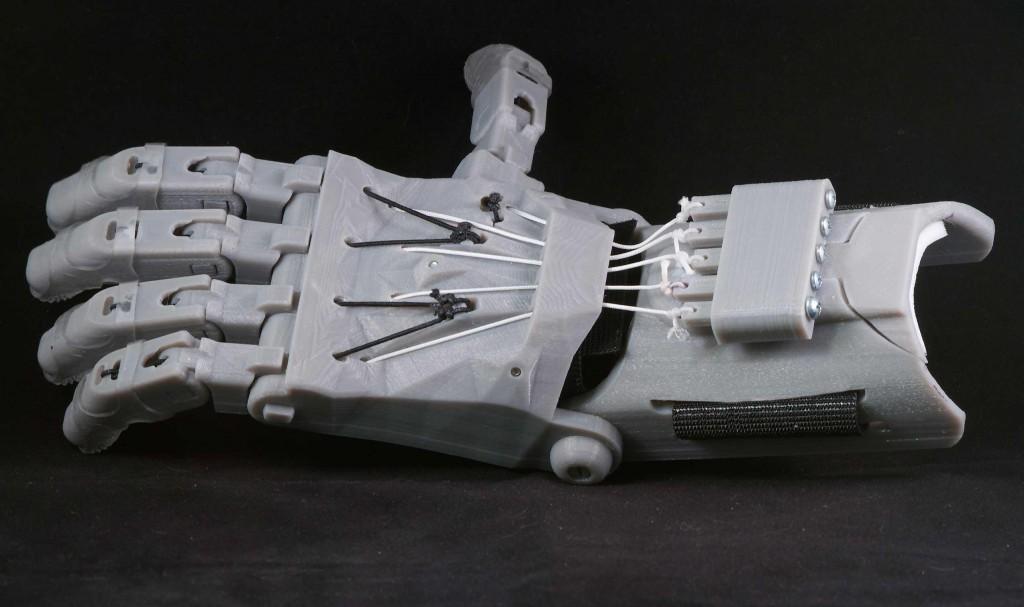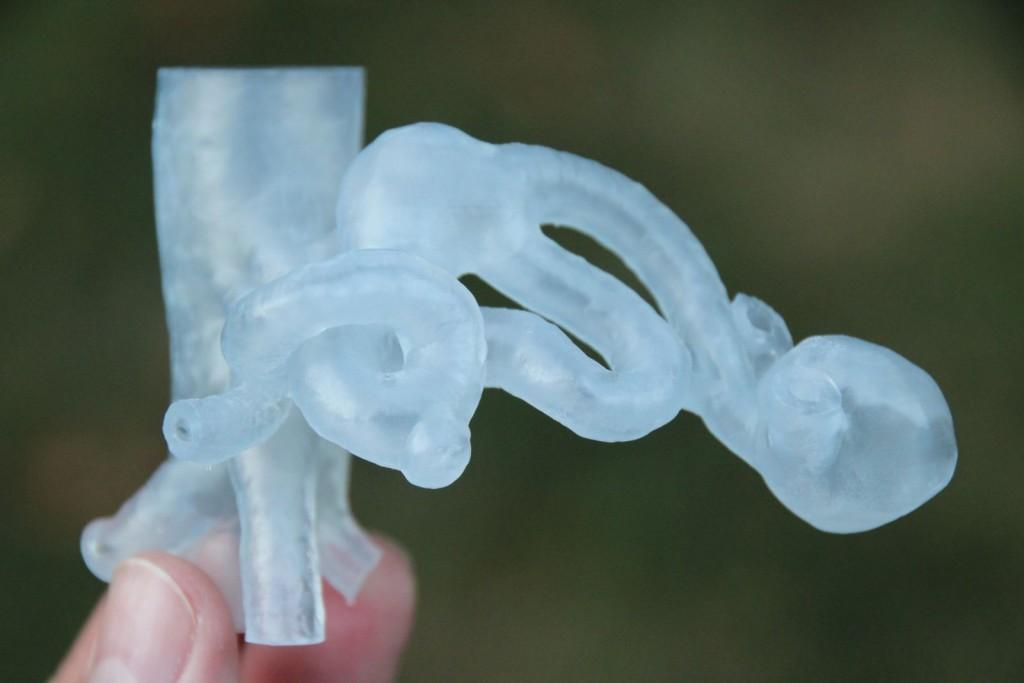I was just having a conversation with a friend yesterday regarding the music industry. We’d both seen a clip of Joe Walsh discussing basically how hopeless, bleak, and dead the music industry has become and my friend–a long-time musician–agreed vehemently, much to my annoyance. You see, I don’t think music is dead. Walsh’s point, a common chant today, was that there’s no money in the industry, no one gets paid, and ‘it’s all up to the young people to figure it out.’
Pointing out that the magic is gone, the ‘mojo’ has disappeared, and the digital age is completely responsible, I disagree. It would certainly, however, seem that the whole idea of the sharing community is going to take some getting used to. Yes, it takes a bite out of income–but is art supposed to be about mansions, private jets, and wrecking hotel rooms without regret? Music is still here–it’s just different. Music is not dead; it is alive and evolving into a new shape. Does that idea work for anyone past the millennial generation?
Yes, change is coming, and has come, but many see it as the tip of the iceberg. And according to some, the music industry is the slumped over canary in the coal mine when it comes to predicting economics in general. Could this be a parallel to 3D printing and the manufacturing industry? Certainly when it comes to the ‘fine, I’ll just make it myself’–and share it with everyone else for free too–attitude, there are distinct parallels. And as for the larger picture in manufacturing, looking at industries like aerospace, automotive, and the medical arena–there are certainly transformations happening, and the world does seem to be alight with one innovation after another–all gladly driven by human minds. But really, what does music have to do with manufacturing, and all the industry it encompasses, in the long run?
1999, according to the Magazine section of online BBC News, was the most profitable year in the history of the music industry. As is all too often the trend though, that wild euphoria, with those benefiting simply awash in dollar bills, almost always leads to a crash. While what many maintain to be a decline that was rather insidious, it’s certainly clear that a major shift is here now.
Anyone who really listens to music knows that there are still plenty of artists out there creating authentic music and actually playing their instruments. Some are rich, some are poor–some are in the middle. But perhaps as new generations come up, their views on materialism–and art–are more simple. Many caught in the contemporary crossfire of trying to make a living as they once did though are now scrambling for options.
Sam York, an accomplished musician himself, recently highlighted a lot of concerning information regarding parallels in music and manufacturing, having come upon a book from 1976 by Jacques Attali, called Noise: The Political Economy of Music.
Indeed, Atalli sees music, money, and power as all “tightly interlinked.” Certainly, it makes sense–and the highly respected and very accomplished economist, philosopher and political adviser was able to predict a great deal of what we see happening today in what he referred to as “a strange book, on a strange issue.”
One of the points of his book should perhaps have been more closely heeded a much longer time ago, but of course it takes years and decades for some of these concepts to make sense, and by then, perhaps it is too late. Atalli saw the writing on the wall for fat cats in the industry. While they may have been powerful in the moment, riding in Rolls Royces, awash in luxury, and controlling who was going to ‘make it’ or not–Atalli saw that with the amount of music being flooded onto the market, decline was inevitable. Very much like the real estate bubble–he saw it bursting in the future, with no way to stop it. The classic euphoric phase was an indicator as always.
If music is indeed our ‘canary’ though, then perhaps there is still time to mold economics somewhat differently when it comes to connections like manufacturing and a potential downfall due to the disruption of 3D printing–as many are predicting. There are so many obvious positives going on. How to keep hold of those, while discarding or eliminating the negatives? Have things already grown too far out of control with 3D printing to rein them back in?
There is a matter of perspective and what things bring to human life–aside from income. While the music industry may not be experiencing the excesses of income it once did, people are able to share the joy of music easily, whether with a tune they like and want to see what a friend thinks, or a song sharing a memory, or even a love song being shared as a gift, tying two people together–it can often be an improvement on flowers or jewelry, and may cost nothing.
Music takes us up and down. It’s art and emotion. Is taking the money quotient out of it all so bad? How does the “crisis of proliferation” as predicted and explained by Attali affect the world overall–or just the world of the artist?
“This ‘crisis of proliferation’ has come to pass, as I’ve already noted,” says York. “Great for listeners, some might say, but tough for the musicians who used to rely on selling recorded music to make a living.”
Pointing out that through the ages, music has been one of the first places we see trends appearing, we should of course take a strong look at its example. Music is of course also where human expression is, quite literally, most vocal, so it can be the most overall snapshot of our world–at any point in time.
As for manufacturing, few might consider it an actual art. And money has definitely always been at the center of this sector, presented so, unabashedly by those who are involved; nevertheless, technology is sought after and it means change. So in reaping what we sow, and in embracing the temptation of innovation (and yeah, some really cool stuff–impossible to resist on nearly every level), manufacturing is definitely seeing some transformation thanks to 3D printing. Most manufacturers seem happy as all get out, but as 3D printers and their kissing cousins, robotics, virtual reality, and more, take the stage–some traditional jobs will inevitably become obsolete.
And perhaps, if additive manufacturing brings, as predicted, an entire third revolution–a staggering amount of jobs could be lost. As the old goes out though, new comes in. New skill sets are being required for new jobs. Many large companies are seeking those with digital design and 3D printing experience desperately as they find themselves with jobs available and no one skilled enough to fill them. Yet.
Attali was right about music for the most part, far before we knew anything about streaming music and sharing it for free like it was going of style. So, as the same great thinker projects a parallel with manufacturing and 3D printing, what do we do with that?
While jobs are a huge consideration because they affect human lives and loss of them can definitely have terrible and lasting impact, we also have to look at all the ways 3D printing is offering a higher quality of life. Aside from the artist or the jewelry maker who can now learn to design, edit, prototype and manufacture completely on their own–aside from the automotive manufacturer who can now make higher-quality components more affordably–and aside from entities like NASA and others who are looking into how 3D printing will quite possible allow for colonization and self-sustainability–what’s happening in the medical industry really can’t be viewed as a negative.
3D printing in the medical industry would certainly be emphasized as positive by anyone who has received an affordable, customized 3D printed prosthetic (or maybe even one for their pet), had their lives saved due to a 3D printed model that helped with a diagnosis, plan, and groundbreaking surgery, or for those who are looking ahead to incredible innovations like 3D printed organs for patient-specific transplants–changing the traditional idea of working their way up the ‘waiting list’ to survive.
The even bigger picture that Attali is truly concerned with is what will happen to nearly every industry when we can simply make virtually whatever we want at home on our 3D printer. When your kitchen spatula wears out while flipping that last juicy burger, you just throw it out and make a new one, or even upcycle the broken one into the new. When you want a specific replica or piece of art, you just print it out. When your car engine is having trouble, 3D print another. This can stretch to every part of our lives as we speculate on the far future–from 3D printing everything we need at home, to the house itself. And what then? The implications are nearly too vast to consider, and while not alone, Attali is certainly correct in pointing out that this is an enormous world trend to think about.
While music may predicate and predict substantial trends, it is only one industry. 3D printing is, however, affecting nearly every area of the world, literally. Most definitely, the expansiveness of that needs to be looked at much more closely in terms off ill–and gain. It’s not a conversation that’s ending any time soon though–and that, you can take safely take to the bank.
Subscribe to Our Email Newsletter
Stay up-to-date on all the latest news from the 3D printing industry and receive information and offers from third party vendors.
You May Also Like
3D Printing Webinar and Event Roundup: May 5, 2024
We’ve got a busy week of 3D printing events ahead of us, in Texas, Florida, Washington, D.C., Shanghai, and more. Webinar offerings will cover medical models, PolyJet 3D printing, additive...
High Stakes, High Speed: KVG Acquires 15 Nexa3D HSE 3D Printers to Boost Military Tech
As 3D printing increasingly intersects with defense and military logistics, a new partnership between Nexa3D and mission support logistics firm KVG stresses the growing importance of this technology in strategic...
Construction 3D Printing CEO Reflects on Being Female in Construction
Natalie Wadley, CEO of ChangeMaker3D, could hear the words of her daughter sitting next to her resounding in her head. “Mum, MUM, you’ve won!” Wadley had just won the prestigious...
3D Printing News Briefs, February 17, 2024: Shot Blasting, Service Bureaus, & More
In today’s 3D Printing News Briefs, we’re starting out with post-processing, as SKZ Würzburg is using a shot blast system from AM Solutions for its research. Moving on to business,...



































